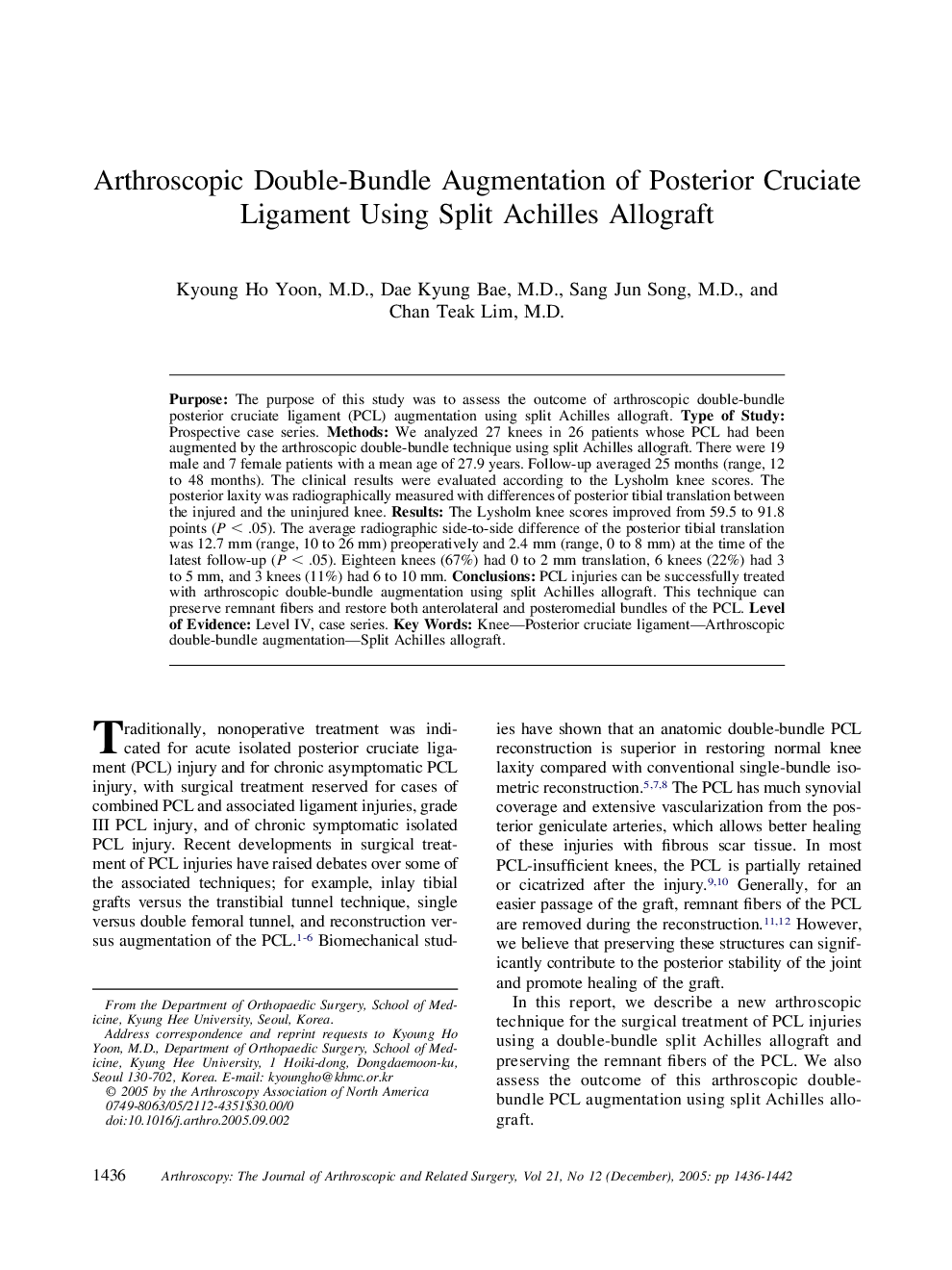| Article ID | Journal | Published Year | Pages | File Type |
|---|---|---|---|---|
| 10078738 | Arthroscopy: The Journal of Arthroscopic & Related Surgery | 2005 | 7 Pages |
Abstract
Purpose: The purpose of this study was to assess the outcome of arthroscopic double-bundle posterior cruciate ligament (PCL) augmentation using split Achilles allograft. Type of Study: Prospective case series. Methods: We analyzed 27 knees in 26 patients whose PCL had been augmented by the arthroscopic double-bundle technique using split Achilles allograft. There were 19 male and 7 female patients with a mean age of 27.9 years. Follow-up averaged 25 months (range, 12 to 48 months). The clinical results were evaluated according to the Lysholm knee scores. The posterior laxity was radiographically measured with differences of posterior tibial translation between the injured and the uninjured knee. Results: The Lysholm knee scores improved from 59.5 to 91.8 points (P < .05). The average radiographic side-to-side difference of the posterior tibial translation was 12.7 mm (range, 10 to 26 mm) preoperatively and 2.4 mm (range, 0 to 8 mm) at the time of the latest follow-up (P < .05). Eighteen knees (67%) had 0 to 2 mm translation, 6 knees (22%) had 3 to 5 mm, and 3 knees (11%) had 6 to 10 mm. Conclusions: PCL injuries can be successfully treated with arthroscopic double-bundle augmentation using split Achilles allograft. This technique can preserve remnant fibers and restore both anterolateral and posteromedial bundles of the PCL. Level of Evidence: Level IV, case series.
Keywords
Related Topics
Health Sciences
Medicine and Dentistry
Orthopedics, Sports Medicine and Rehabilitation
Authors
Kyoung Ho M.D., Dae Kyung M.D., Sang Jun M.D., Chan Teak M.D.,
